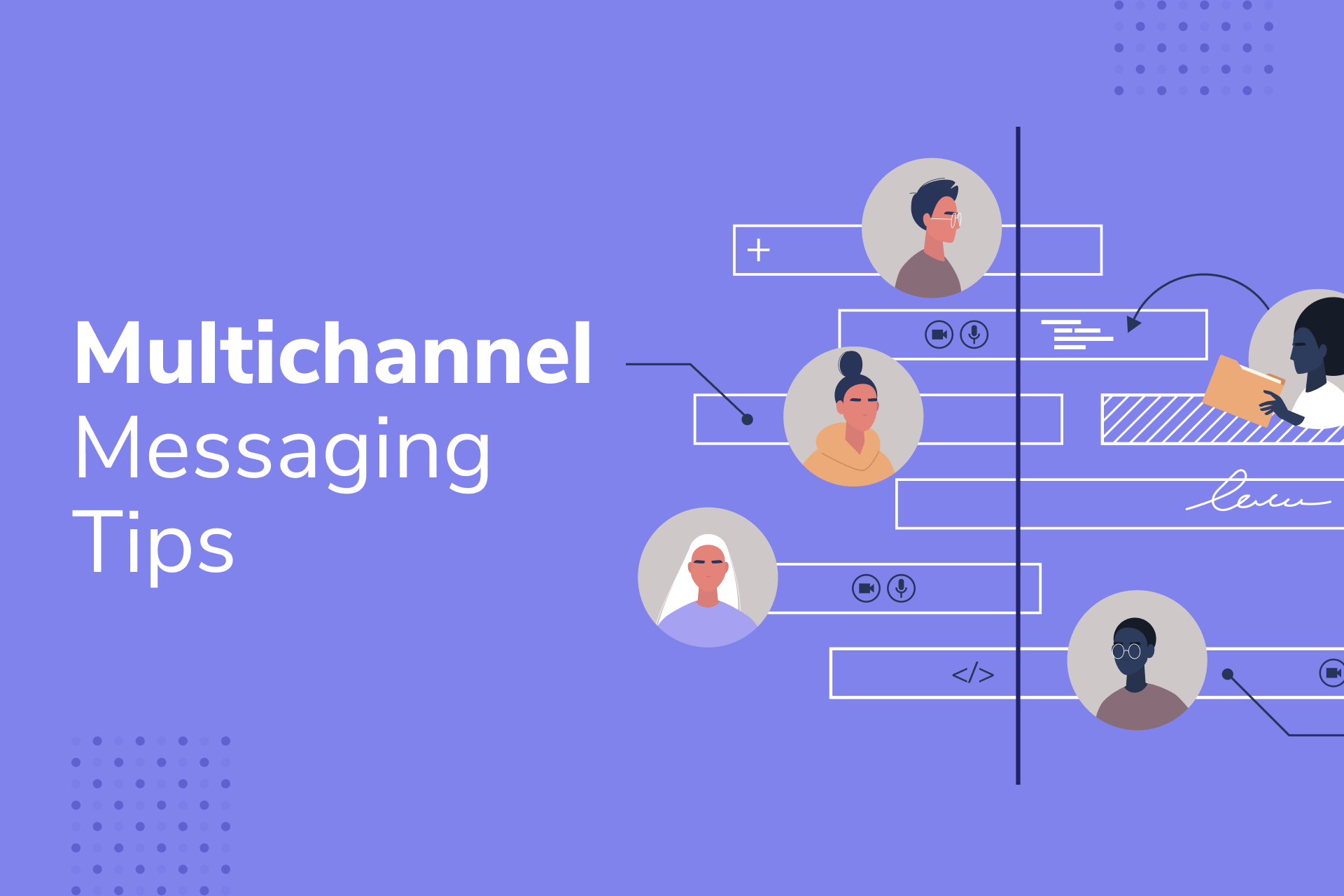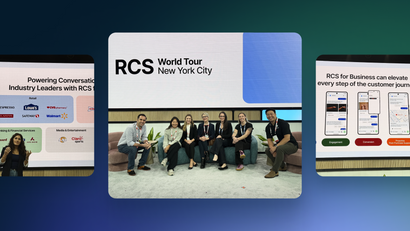As a high-growth startup, you probably know that an omnichannel messaging strategy is crucial to creating a sticky and seamless user experience, encouraging app engagement, and increasing user retention over time. The greater challenge, however, is knowing when and how to leverage each messaging channel to have the greatest impact.
The Benefits and Limitations of Different Communication Channels
In 2020, the number of worldwide mobile app downloads skyrocketed to 218 billion, marking a striking 55 percent increase from 2016 and a 7 percent increase from the previous year. Global mobile app consumer spending has increased by 42 percent in the last couple of years alone.
While the mobile app space is ever-expanding, a 2019 study shows that 25 percent of mobile apps downloaded worldwide were used only once. Herein lies the biggest challenge facing mobile apps today: user retention.
Luckily, a well-executed omnichannel messaging strategy addresses this challenge. Whether you're sending transactional or marketing messages, it helps to understand the strengths and weaknesses of each channel. Let’s hop into some of the key benefits and limitations of three messaging channels: mobile push, in-app messaging, and SMS.
Mobile Push Notifications
Mobile push notifications are highly visible and customizable, which makes them a valuable re-engagement channel.
These notifications provide a direct line of communication with your end user, catching their attention even while they’re inactive on your app. In this way, mobile push notifications can reach audiences whose attention is likely split among a sea of apps vying for their engagement. Stay ahead of the competition and use mobile push to reinforce the value of your app and keep users coming back.
Another benefit of using mobile push notifications is that you can segment your broader audience and personalize content for distinct use cases.
With mobile push, you have the freedom to segment based on user behavior, time zone, demographics, and more. From here, you can personalize and customize messages with the most compelling or time-sensitive content. If you know a west coast user is generally active on your gaming app on her lunch break, you can send her a daily push notification at 12:00pm asking her to participate in a new challenge. As you build re-engagement campaigns, let user preferences (such as the type of news alerts a West Coast Warriors fan wants to receive) and behaviors (such as the number of magic chests a player has already opened) inform your message content and timing. Knowing what’s important to your users will help you reengage them with relevant content.
Push notifications are also versatile in their form and function. They can deep-link to a specific menu, screen, or feature in your app, which prompts the user to follow through on your desired action with minimal friction. These messages can deliver both transactional and marketing messages. In addition, they can be formatted with rich media, including emojis, images, and videos, to complement the call-to-action (CTA). Sometimes the simplest switch, such as adding an emoji or including an image, video, or gif alongside your copy, can significantly improve your message conversion rates.
One limitation of mobile push is that they require iOS users to opt-in to receive them. Opt-in rates for iOS devices are generally between 40 and 45 percent, compared to 90 percent for Android devices. Earning opt-in permission from iOS users can be a delicate process. Once users have opted in, they can revoke permissions if they don’t appreciate the messages they’re receiving. It’s important to diversify the type of content you send and be mindful of the frequency at which you send it so as not to annoy users.
Users also receive a high volume of mobile notifications, which means the competition is stiff in this channel. To stand out, enhance your messages with emojis, images, or gifs to make your notifications pop. In addition, personalize your messages whenever possible, using data such as a user’s name, preferences, demographics, and behavior, to share compelling content.
In-App Messaging
In contrast to mobile and SMS notifications, which communicate with users after they’ve exited your app, in-app notifications communicate with users while they’re directly engaged. Since they are native to your app, they don’t require a user’s opt-in.
While SMS and mobile push notifications are well-suited to re-engagement initiatives, in-app messages are ideal for enhancing your user experience and working to build long-term user loyalty. You’ll use these types of messages to craft a seamless product experience, which can help you foster user retention and encourage in-app purchases.
One way in-app messages can be used to eliminate friction and boost retention is by creating an app onboarding process that will keep users locked in.
Craft interactive onboarding flows by presenting slide cards carousel with intuitive design elements that prompt user engagement. Use single or multiple slide cards to walk users through your platform, introduce key features, and/or present value propositions. You can even customize these flows with third-party templates that make it easy to create these flows for new features and app updates as you scale. These sequences should inform and entice users, whether you’re showcasing your app’s UI, pointing out core features, or presenting a value prop. Consider whether to use a functional, benefits-oriented, or progressive onboarding process.
In addition to onboarding flows, in-app messages are also great for creating pre-permission prompts for iOS push, earning user tracking permission, and requesting location sharing permission.
Finally, these notifications are perfect for exciting your users while they’re actively engaged, delivering rewards, sharing discounts, tracking user achievements, and motivating and encouraging users while they are immersed in your app.
Take caution with in-app notifications to avoid common pitfalls. Make sure your messages enhance, rather than interrupt, the user experience. To perfect your message timing and relevance, identify engagement milestones and user behaviors that can serve as triggers for your automated messaging campaigns. Pinpoint what’s working by A/B testing whenever possible. Used thoughtfully, in-app notifications should improve a user’s in-app journey, so make sure their addition isn’t detracting from the product experience.
Known for its flexible format, widespread global use, and high ROI, email is an irreplaceable channel to throw into your omnichannel marketing mix.
Email is a legacy channel used by over half the world’s population. It can be used to send all sorts of communications from your mobile company—from onboarding series to product and feature updates to upsells and more.
For one, it’s hard to argue with email’s ROI. On average, companies can expect a $42 ROI from email for every dollar spent on the channel.
In a world where 1 in 5 users will abandon an app after first use, email is a critical way to reengage users who may not have push enabled or who are looking for more detailed onboarding or education across channels and devices. Email offers you ample room for creativity and in-depth content compared to channels such as push and SMS, which offer only limited space to communicate your message.
This channel can also help you appeal to distinct audiences. Research shows that mature audiences strongly prefer email and engage with this channel more frequently than younger audiences. In one study, cohorts 45 to 65 years of age checked their email at least once a day, and older members of this cohort were more likely to do so on Desktop. In this way, you can diversify your communications strategy by messaging different audience segments where they feel most comfortable.
Email is also a go-to channel for private, professional, and financial communications such as invoices, receipts, lab results, and other formal documents. Because email is a secure place to communicate sensitive information, apps in the financial services, telehealth, and eCommerce industries tend to rely on this channel for this class of communications. SMS, web, and push notifications are less private and less permanent in nature, which means they’re not the best options for these formal communications.
Although email is an excellent choice for certain use cases, it’s less-than-ideal for others. Be wary that email is not a real-time channel. Opt for a different channel in communicating urgent updates that require users to take action, such as in situ order delivery notifications from your food delivery app, gate changes from your travel app, or Black Friday price drop notifications from your retail app.
SMS
It’s no secret that consumers have intimate relationships with their phones. According to a recent study, Americans check their phones an average of 262 times per day. With that statistic in mind, it's no surprise that mobile-first channels such as SMS have a 78 percent higher open rate and 39 percent higher response rate than email.
SMS is a powerful messaging channel for a variety of other reasons as well. Using SMS, you can communicate to audiences who haven’t yet downloaded your app or are not actively engaged. You can even reach audiences with little or no internet access, such as users who are traveling.
SMS is distinctly useful in that the messages you send have more permanence. While users can swipe away a mobile push notification without opening it, text messages live on users’ phones until they’re opened and/or deleted. Provided that users don’t delete your initial message, subsequent texts you send will appear and be cataloged in the same thread. SMS are a fit for longer-lasting message content and deeper customer interactions, such as ongoing promotions, support messages, and alerts, while push notifications are ideal for real-time updates and limited-time offers such as one-day-only promotions. They are also useful for high-priority messages, such as bank alerts, for which users appreciate having a permanent record.
Another benefit of SMS is that it’s a consumer favorite among marketing channels. One study showed 75 percent of consumers prefer receiving offers over SMS versus other channels. Respect these preferences by using text messages to send coupons, ticket releases, special product announcements, and other account-related messages.
SMS notifications are limited in the sense that they provide fewer options for customization. These messages are capped at 160 characters and are limited in the types of multimedia they support. Oftentimes, multimedia elements render differently across devices. The messages you tailor for this channel should be simple and succinct and should convey your CTA without any fluff.
Like mobile push notifications, SMS notifications are permission-based, meaning you’re reaching a limited subset of users with your messaging. Before deploying SMS, you’ll need to gain users’ opt-in and provide a simple and direct method of opting-out in accordance with FCC regulations. To earn SMS opt-ins, mobile companies can capture phone numbers by prompting users to sign up for text messages when they subscribe to receive updates on another channel, such as email, or through web pop-ups. Mobile app companies with limited web and/or email presence can instead prompt SMS opt-ins through social media channels or by running paid ads optimized for this purpose. Another strategy for receiving a higher volume of SMS opt-ins is by providing incentives such as discounts or by running contests or giveaways via text.
Get Started with OneSignal
OneSignal is designed to help you send notifications and seamlessly manage your user communication across every channel, including mobile push notifications, web push notifications, bulk SMS, in-app messaging, and email. Our platform is quick to set up and makes it easy to customize and automate your messaging strategy without doing any development work. If you don't have a OneSignal account, you can create one for free and start sending push notifications to your users today. Don't take our word for it — sign up and see for yourself!
Create a Free Account



